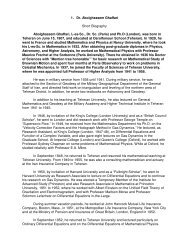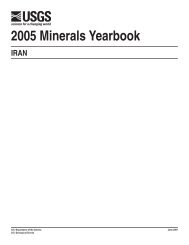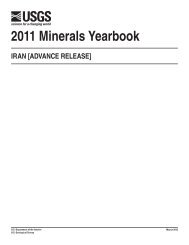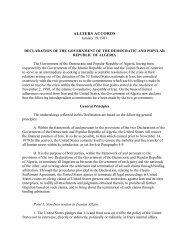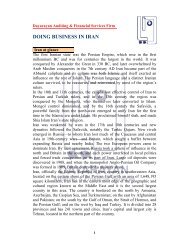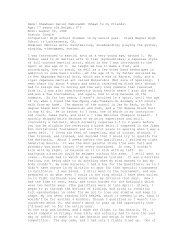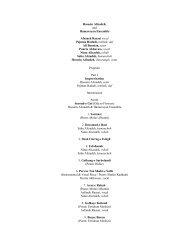Create successful ePaper yourself
Turn your PDF publications into a flip-book with our unique Google optimized e-Paper software.
<strong>Iran</strong> <strong>Country</strong> <strong>Analysis</strong> <strong>Brief</strong><br />
wholly owned subsidiary of Tavanir. Eventually, Tavanir may be broken up<br />
into smaller companies as part of a privatization package. In addition to<br />
power generation, Tavanir also is responsible for transmission. <strong>Iran</strong> has main<br />
power distribution networks: 1) the Interconnected Network, which serves all<br />
of <strong>Iran</strong> except for remote eastern and southern areas, using 440-kV and 230-<br />
kV transmission lines; 2) the Khorassan Network, which serves the eastern<br />
Khorossan province; and 3) the Sistan and Baluchistan Network, which serves<br />
the remote southeastern provinces of Sistan and Baluchistan. The government<br />
goal is to join these three networks into one national grid. Currently, around<br />
94 percent of <strong>Iran</strong>'s rural population has access to electricity.<br />
Overall, <strong>Iran</strong> imports around 1.5 billion kilowatthours (Bkwh) per year, and<br />
exports just under 1.0 Bkwh. <strong>Iran</strong> trades electricity with Afghanistan (exports<br />
to the western part of the country), Armenia (exports and imports), Azerbaijan<br />
(exports and imports), Pakistan, Turkey and Turkmenistan (exports and<br />
imports). In April 2003, <strong>Iran</strong> said that it would be willing to supply Iraqi cities<br />
with electricity as well. In December 2004, a protocol was reached on<br />
synchronizing the power grids of <strong>Iran</strong>, Azerbaijan, and Russia. In August<br />
2004, Turkmenistan began power exports to <strong>Iran</strong> via a new transmission line<br />
(Sarahs). Annual exports of 375 million kilowatt-hours, worth $7.5 million,<br />
are expected. This line adds to previous electric export capacity from<br />
Turkmenistan to <strong>Iran</strong> via the Balkanat-Gonbad line started up in June 2003.<br />
Another line is to be constructed in the short-term, bringing total power<br />
exports from Turkmenistan to <strong>Iran</strong> to 2.4 billion killowatt-hours per year.<br />
NUCLEAR<br />
Currently, <strong>Iran</strong> has several small nuclear research reactors, in addition to a<br />
large-scale nuclear power plant under construction at the southern town of<br />
Bushehr. <strong>Iran</strong> claims that its nuclear power is for peaceful purposes and that it<br />
will help free up oil and natural gas resources for export, thus generating<br />
additional hard-currency revenues. The country has stated its aim of having<br />
7,000 MW of nuclear power online by 2020, accounting for 10 percent of the<br />
country's power generation capacity at that point. In January 2005, the Majlis'<br />
National Security and Foreign Policy Committee Chairman, Aladdin<br />
http://www.eia.doe.gov/cabs/iran.html (23 of 32) [3/30/2005 8:12:05 AM]



